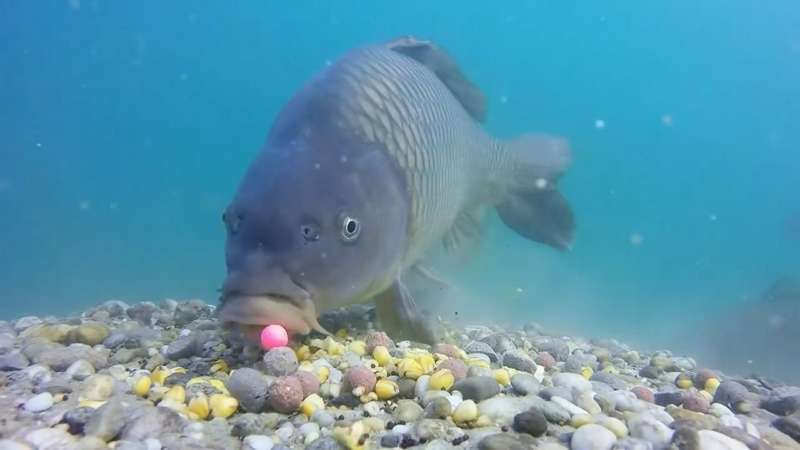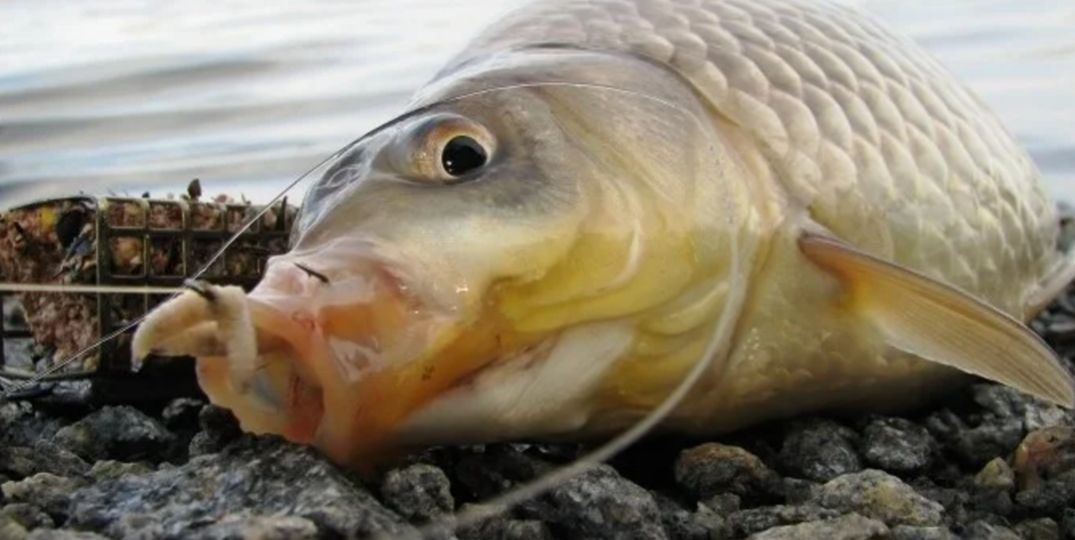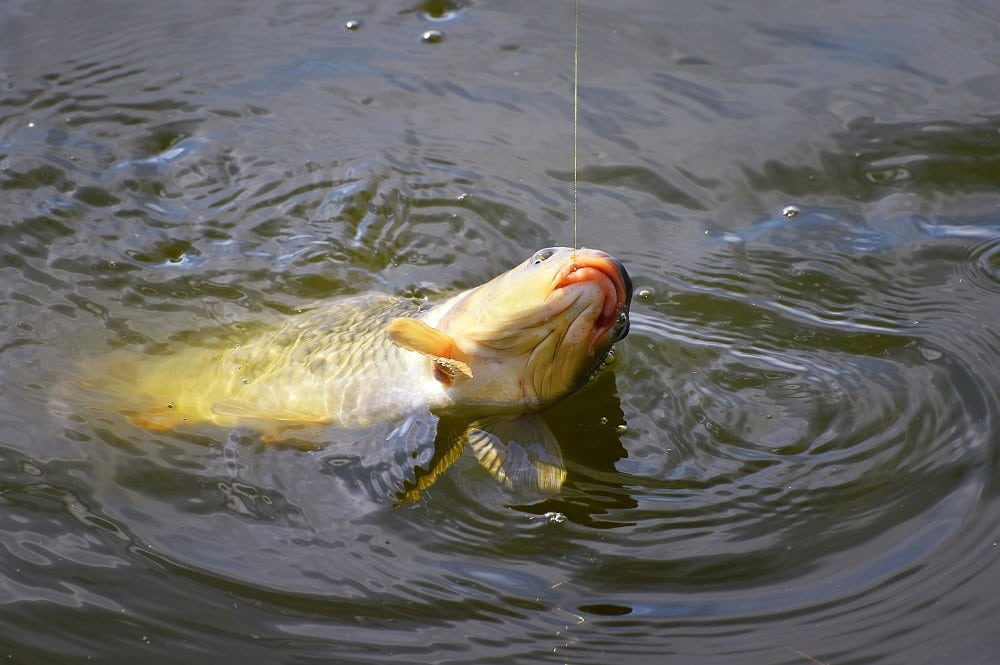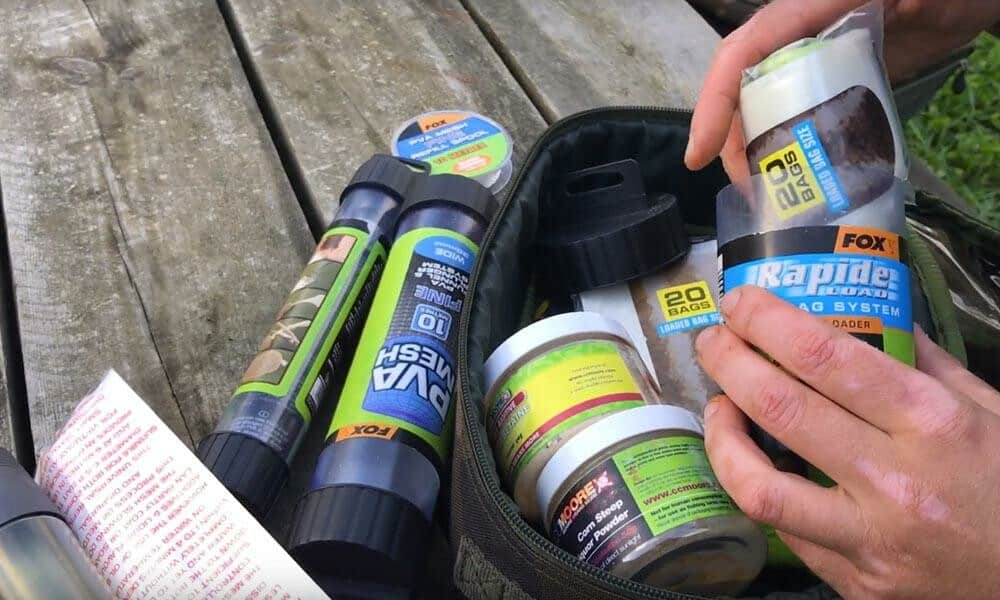Boilies are used to catch carp and
carp , roach, bream, crucian carp. This is a special bait for catching cautious fish, while being quite easy to use. If you have the opportunity and the necessary skills and knowledge, you can make boilies for carp fishing at home, or just buy them at a fishing store. But for carp fishing to be effective, you need to follow certain rules.
- What you need to know about boilies, what types are there
- Small
- Big boilies
- What purchased and homemade boilies are better for carp in spring, summer and autumn
- What we recommend to buy
- Making boilies with your own hands: recipes, cooking process
- Universal nozzle
- Summer boilies
- For cold water in early spring and autumn
- Required minimum tools
- Step-by-step instruction
- Color and attractants
- Making different types of boilies
- Making rigs when fishing for carp with boilies
- Tackle selection
- On the float
- Feeder rod
- Поделиться ссылкой:
What you need to know about boilies, what types are there
Boyle is a bait that is most often round or made in the form of a cylinder. Boilies can be dusty, floating, sinking, and made up of different ingredients. If boilies are made on their own for catching carp / carp, then the recipes are mainly selected on the basis of a dough that contains fishmeal, starch, semolina and all kinds of attractants.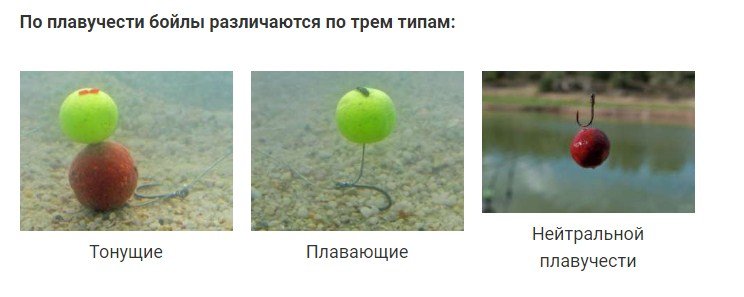

Small
The sizes of these boilies are usually 6, 8, 10, 12 and 15 mm. Main advantages:
- Small boilies are much easier to cast over long distances than large ones.
- Cautious carp always try a small bait first , and sometimes they ignore the attractive big bright boilies.
- Keeping the fish in the right place is much easier with small boilies. With their equal mass, small baits are eaten by the carp much longer due to their large number, and the fish’s strength is spent much higher, respectively, the appetite increases.
- An interesting fact is that in small boilies, all the constituent components remain fresh for much longer , thanks to a more uniform boil-off or ball rolling.
But in small boys there are certain disadvantages:
- It takes a lot of time and effort to make small boilies for fishing, since large fractions of the constituent ingredients complicate the formation of balls.
- At small nozzle usually small fish bites .
Big boilies
This boilie size is over 15mm. The main advantages include:
- If the number of peaceful fish in the fishing area is very large, then large baits are the only option for catching trophy carp . Moreover, these boilies are much easier to make, in contrast to small baits.
- If you are catching large specimens, large boilies are ideal. Large bait is attacked only by the corresponding fish size .
There are also disadvantages:
- Heat treatment is uneven, all the components that are in the composition lose their attractive properties. A dense crust appears on the boilies , which prevents the spread of the aroma .
- Inactive carp often just do n’t see this big bait . The fish quickly swallows the bait, and it does not make any effort, respectively, the appetite is significantly reduced.
But the advantages and disadvantages described above are rather arbitrary, since all cases are purely individual.
Recommendation: First of all, you need to decide on the priorities, what kind of fish you need to catch – a small carp or a large carp. It is with this in mind that the appropriate choice is made.
What purchased and homemade boilies are better for carp in spring, summer and autumn
Boilies differ in aroma, the following options are most often used:
- with a sweet smell (for summer);
- with a meaty smell (spring, autumn);
- other smells, such as spices.
You can make boilies yourself or buy them at a fishing store.
What we recommend to buy
The leader in the manufacture of baits, baits and attractants for carp fishing is the Richworth company.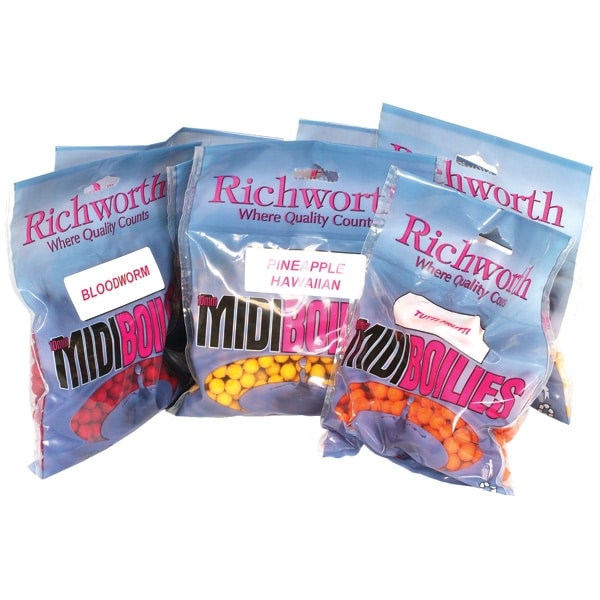
- Nutrabates;
- Manline;
- CC Moore.
Super catchy boilies Lion Baits – carp fishing as it is in 2021: https://youtu.be/Wo6S-qOpLhk Best carp boilies and video review of other new carp fishing Technocarp 2021: https://youtu.be / WswIaaghvgM
Making boilies with your own hands: recipes, cooking process
Before making boilies at home for the first time, you need to prepare, since this work consists of several stages. And to purchase some of the components and tools needed to implement the recipes.
Universal nozzle
Catching wild carp on an unpressurized reservoir is successful if you use the following boilie recipe:
- semolina – 3 glasses;
- soybeans, wheat flour and dry cream – only 1 kg;
- vegetable oil – 3 tablespoons;
- eggs – 10 pcs.;
- sunflower seeds, hemp – 2 cups each.
All seeds are ground in a blender, then mixed with flour and semolina. The eggs are shaken and poured into butter. The resulting components are mixed, this is how the dough is obtained, and the boilies are boiled from it for 3-6 minutes.
Summer boilies
In summer, fish needs more protein, this should be taken into account when making boilies on your own. Summer carp boilie recipe:
- dry cream – 700 grams;
- premium white flour – 0.5 kg;
- per kilogram of the mixture – 10 eggs;
- pellets for aquarium fish – 1 glass;
- sunflower oil – 4 tablespoons;
- dye – 2 tsp.
Of all the components, the dough, rolling into the sausage, is kneaded, and then 1 cm balls are cut into pieces. Then they are boiled for 2-3 minutes and allowed to dry.
For cold water in early spring and autumn
In cold water, fish prefers food with a large amount of protein. At this time, fish aromas are especially attracted to carp, therefore it is recommended to add bone meal to boilies. To make summer boilies, you will need:
- soybeans – 300 grams;
- wheat flour – 470 grams;
- powdered milk – 180 grams;
- semolina – 200 g;
- sugar – 1 tablespoon;
- ground seeds – 70 grams;
- fish oil – 2 tsp;
- salt – 2 tsp;
- attractant “Monster Crab” – 8 ml;
- betaine – 1 tablespoon;
- eggs – 15 pieces;
- dye – optional.
All of the above boilie recipes have almost the same ingredients, with a few exceptions. That is, you can use the basic ingredients and, through experiments, create your own unique composition, from which in the future, on an ongoing basis, make the best boilies for fishing carp in various conditions.
Required minimum tools
Tools required:
- a measuring cup that allows you to dose the ingredients;
- several containers for kneading;
- two separate spoons for mixing dry and liquid components;
- a syringe, required to squeeze out sausages from the prepared dough;
- board for rolling boilies.
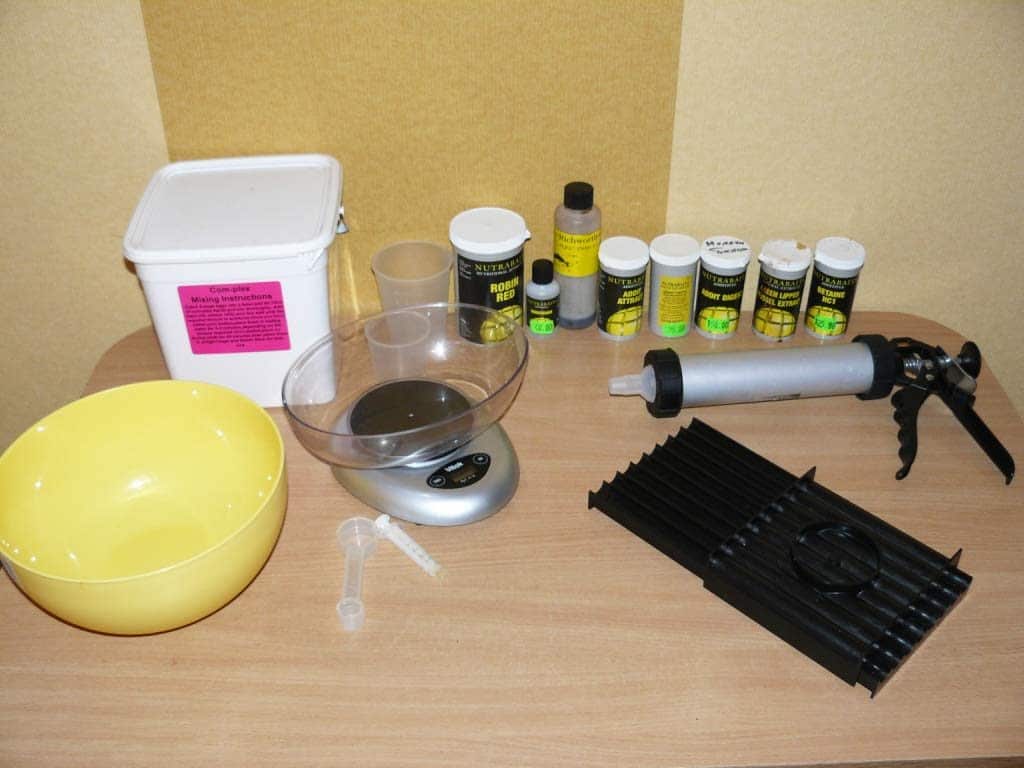
Step-by-step instruction
The main stages of manufacturing look like this:
- in one container it is required to mix all the liquid components, in the second – dry;
- add liquid to the dry composition, constantly stirring, and it is necessary to control so that there is no formation of lumps;
- mix the mixture well so that it is dense, elastic and does not stick to your hands;
- knead the dough;
- you need to tear small pieces from the finished dough, making sausages out of them, while their diameter must approximately correspond to the required size of the boilies;
- cut the sausages into small cylinders and make balls from them by hand or using a boilie table;
- boil future boilies in a saucepan with boiling water.
If we consider what is better – to add mixed liquid compositions to dry substances or vice versa – it is difficult to answer for sure. Both options can be used. The most important thing is that there are no lumps in the prepared mixture as a result; for this, the ingredients must be thoroughly mixed when they are combined. Then, when the dough is cooked, it is recommended to transfer it to a bag and refrigerate for one hour.
Important: When laying the boilies to dry, it is necessary to ensure that the balls do not touch each other. Drying is required in the shade, and not in direct sunlight.
Groundbait, which contains no preservatives, is stored better in the refrigerator, so it will not deteriorate. Boilies with preservatives can be stored indoors at room temperature.
Color and attractants
It is absolutely not necessary to pour in liquid attractants in large quantities. For one kilogram of the mixture, 4-9 ml of this flavoring agent is quite enough, which it is advisable to stir in water before pouring into the dough. In this case, the attractant will uniformly dissolve in the prepared mixture.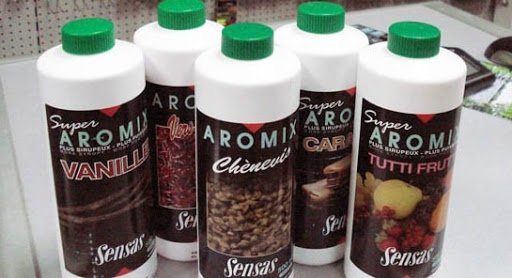
Caution: Liquid colorants must be added to the water in which the liquid components are mixed before they are poured into the dry formulation. In this case, it is recommended to add dry coloring substances to dry groundbait before mixing.
Making different types of boilies
If you first cook the boilies, and then dry them and put them in the freezer, then you can get dense sinking balls. On the other hand, when cooking in a microwave oven, airy floating boilies with a light consistency come out. How much time it takes to prepare boilies of a certain diameter, taking into account a specific recipe, is determined experimentally. To do this, you need to put a test batch of balls in the microwave oven, set the highest power, start heating and watch how long they start to burn. Burnt groundbait is no longer used. During the preparation of the second batch of boilies, the time needs to be slightly reduced, by 10-25 seconds, as a result, you can prepare an ideal bait for carp. Typically, microwave cooking at highest power will take approximately 160 seconds.If you need to make dusty boilies, then balls made from dough should not be heat treated. You just need to leave them on the fabric for high-quality drying. In this case, balls can be made that will quickly collapse when they enter the reservoir, transferring an attractive smell and creating a cloudy cloud. Homemade Fishing Boilies for Carp and Carp Fishing: https://youtu.be/o6mhiIdxWog
Making rigs when fishing for carp with boilies
The main and popular carp rig for boilies is the
hair rig . Materials for making:
- carp hook;
- leash material;
- assembly carp glue;
- shrink tubing (about 5 mm);
- scissors.
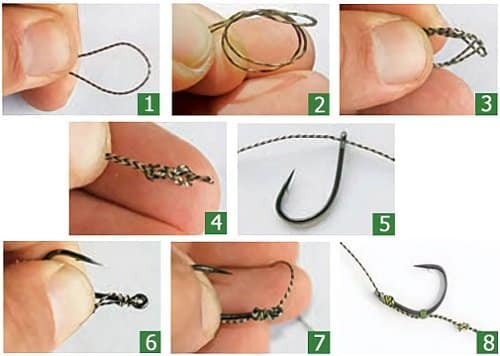
- At the end of the leash material (25 cm is enough), a loop is knitted, after which it is necessary to tie a straight knot with three turns.
- Next, you need a piece of shrink tubing. It is threaded onto the leash material.
- The second end of the leash is put on the side of the sting.
- Seven turns are made on the forend of the leash material, the free end is pulled through the ring towards the point of the hook.
- On the leash material, all knots are fixed with glue.
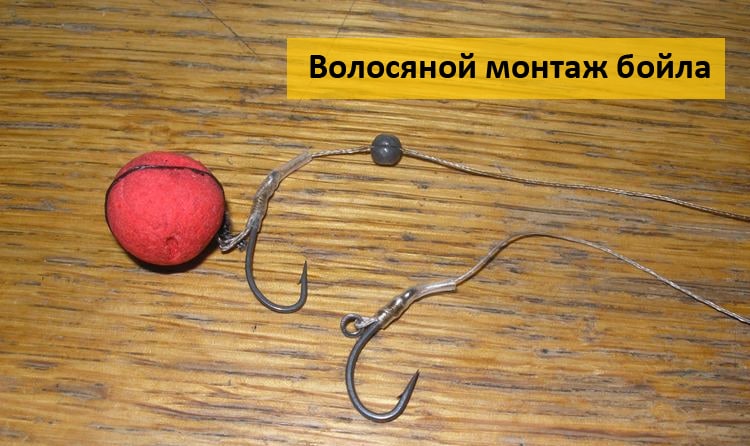
Tackle selection
There are many ways to fish for carp using boilies. Below are the most common ones.
On the float
For fishing with a float, choose the following tackle:
- fishing rod 4-6 meters with dough – 15-35 grams;
- coil size 2000-3000;
- fishing line with a cross section of 0.22 mm, at least – 150 meters on a reel;
- leash – line 0.18 mm, length – 15-25 mm;
- float with a working weight of 3-9 grams;
- the hook is selected taking into account the bait, as a rule, it is No. 6-10.
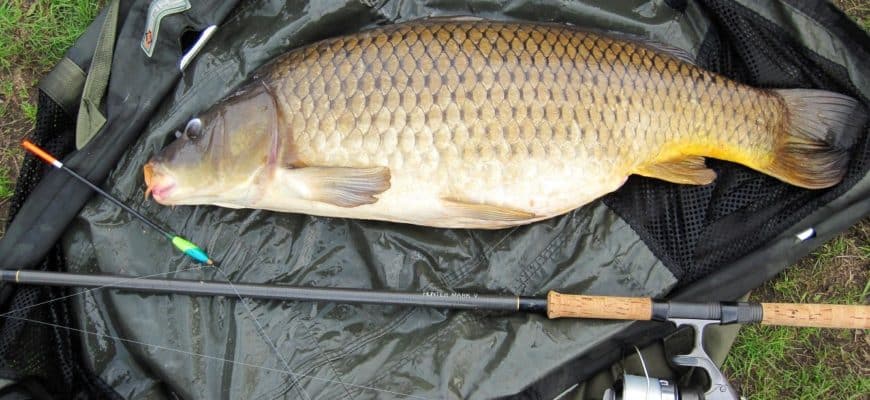
Feeder rod
The feeder rod is one of the best for carp fishing. To equip it you will need:
- feeder – 3.3-3.6 meters with casting up to 100 grams, due to this, long-distance power casts can be made;
- to determine the weight of the feeder, you need to focus on the distance and depth of fishing;
- a line of 0.20-0.28 mm is wound on a reel with a baitrunner;
- leash size – 40-60 cm.
Regardless of which boilies are used, the most important thing is to be sure that yours will attract the curious carp. Confidence in bait and bait is half the battle in effective fishing.
